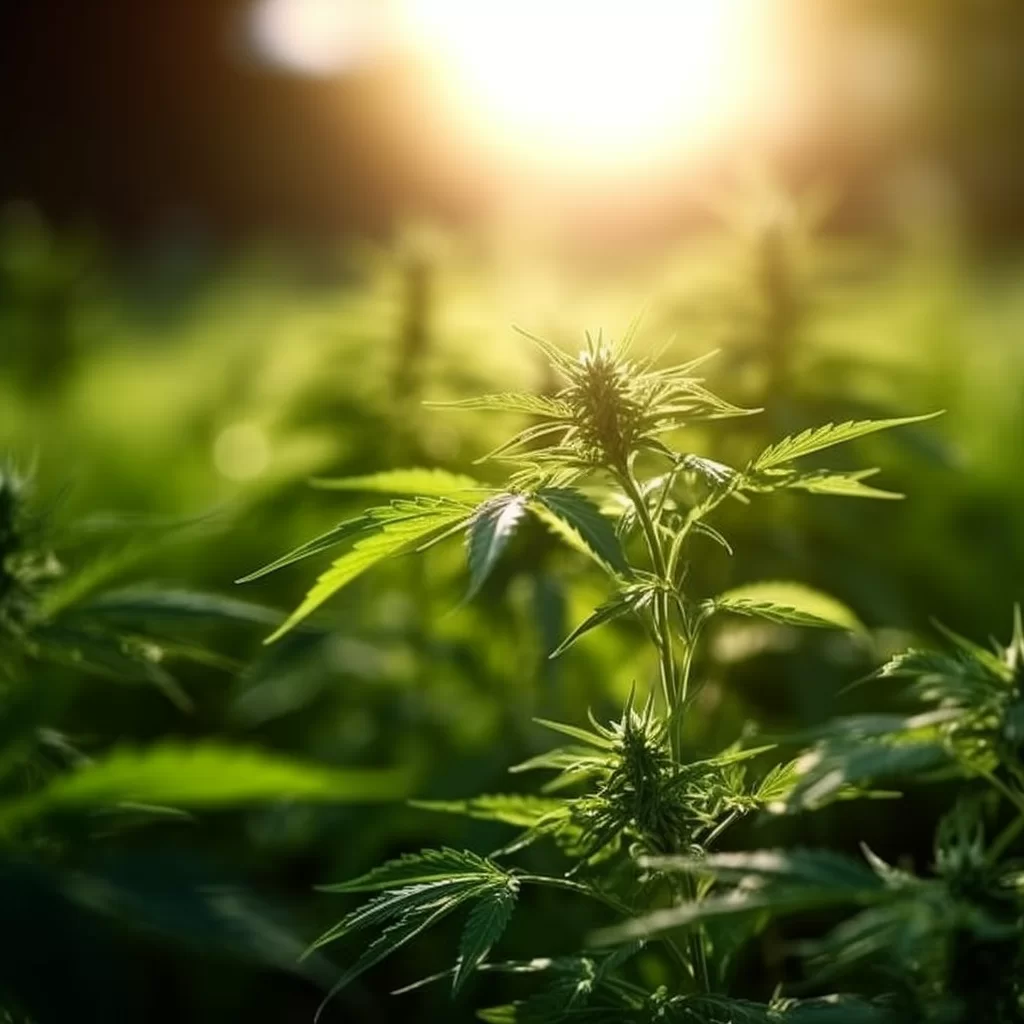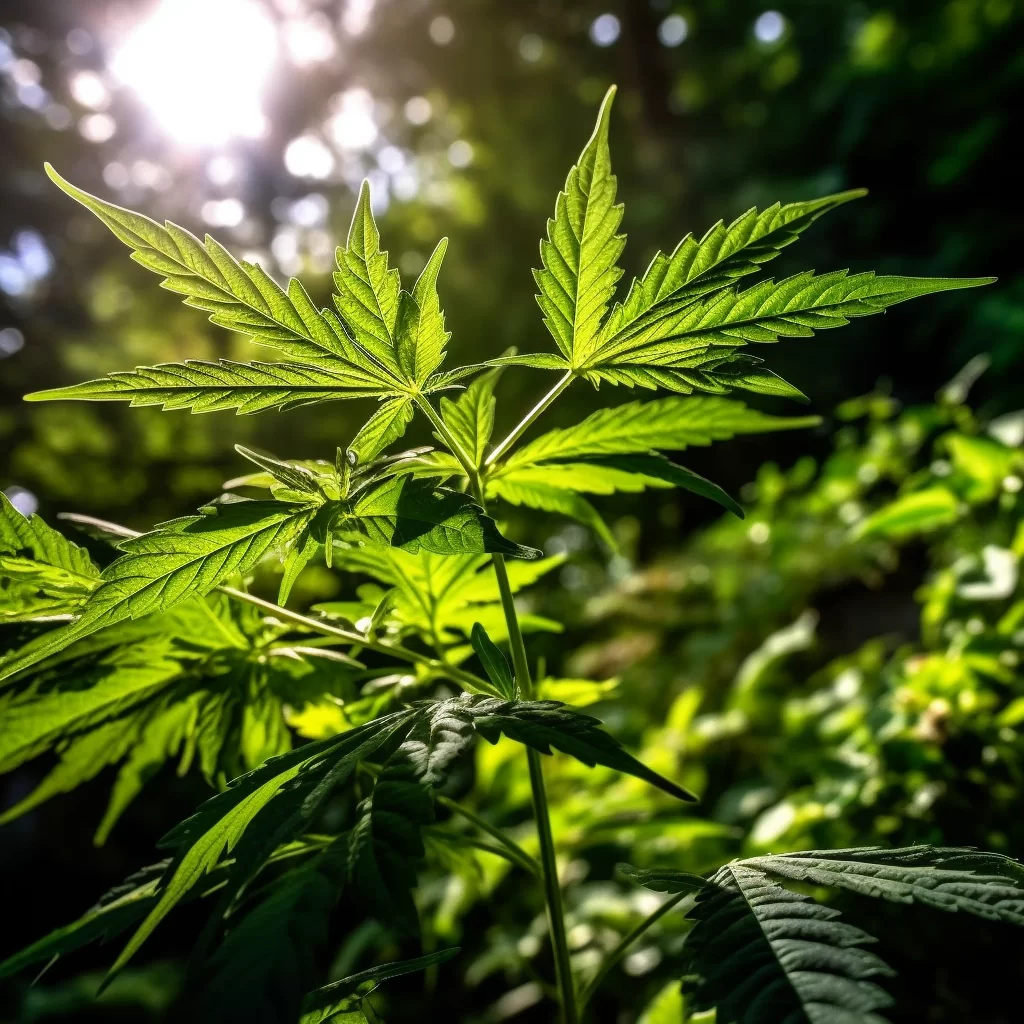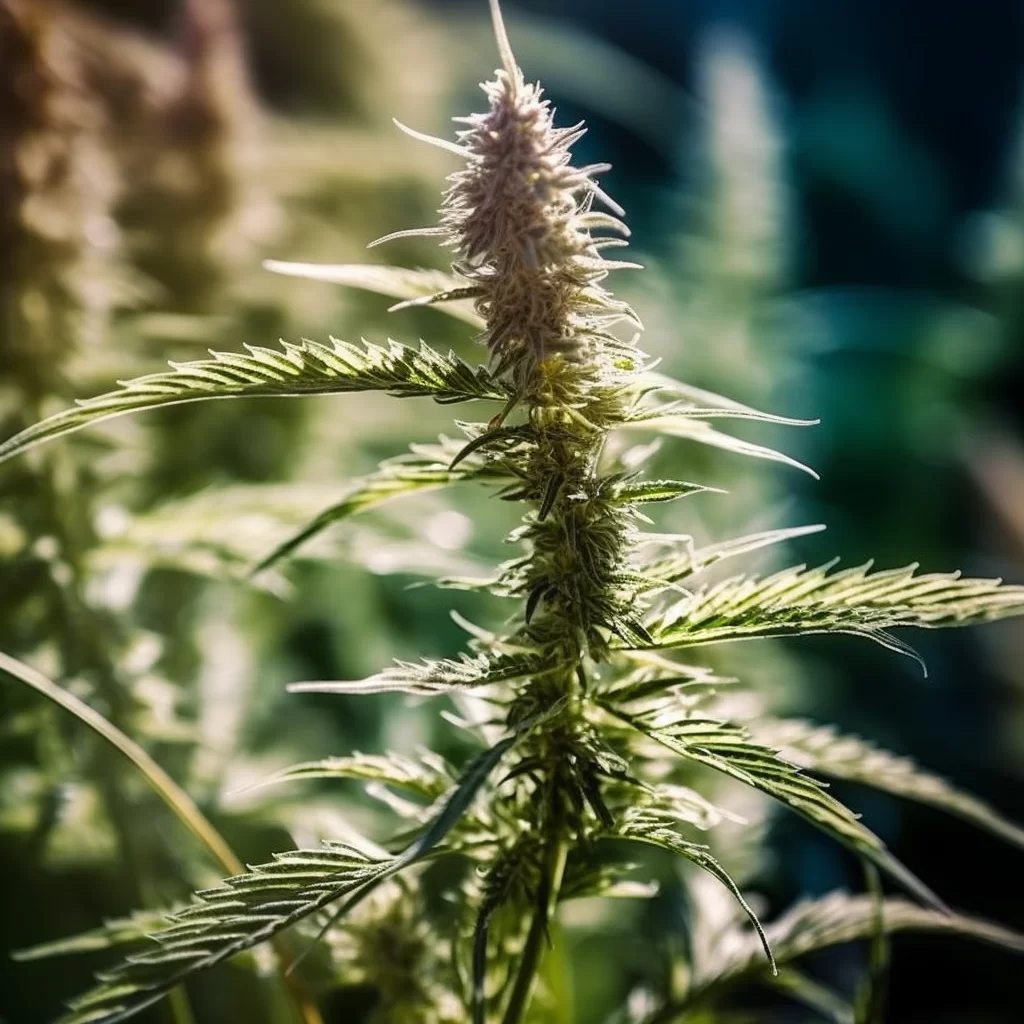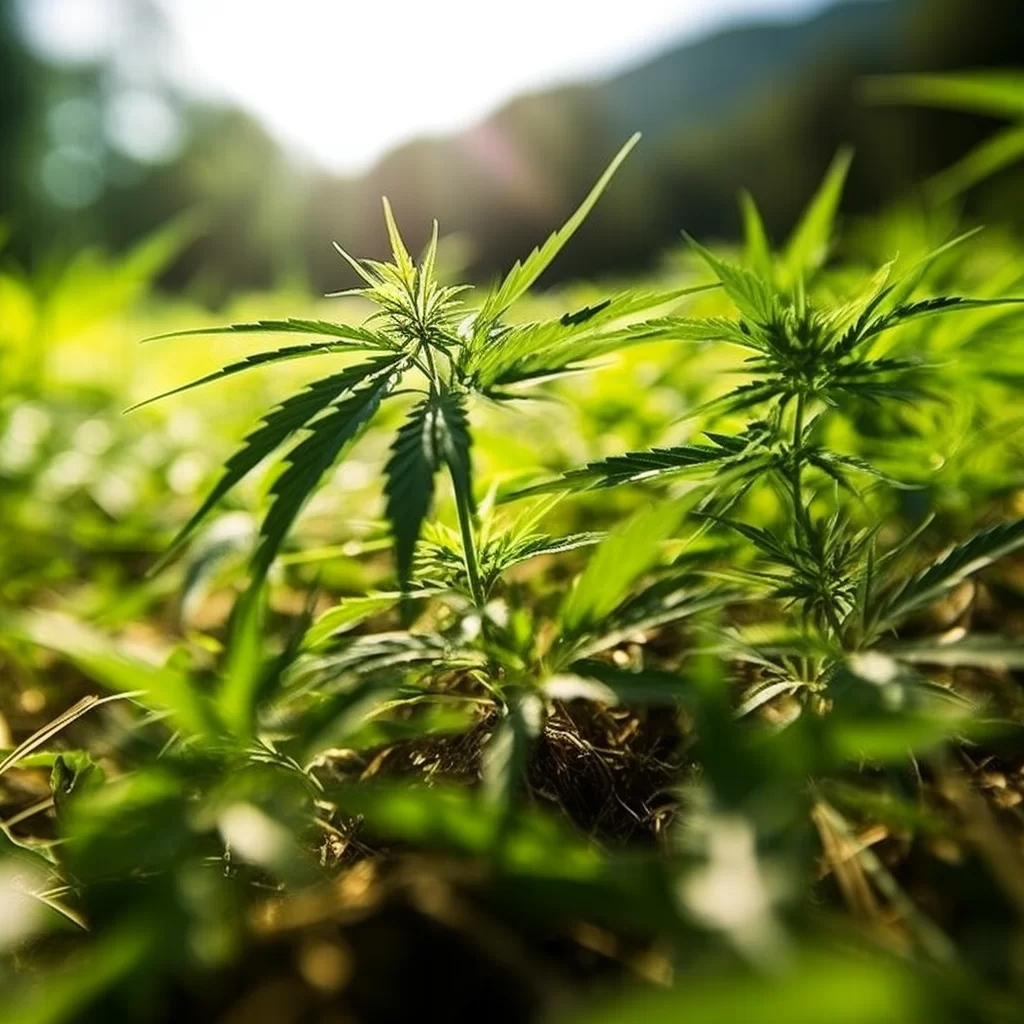Story of Day :
Contents
The Complete Guide and Care Tips for Your Cannabis Sativa Plant
Gardening is a hobby that brings immense joy and satisfaction to those who indulge in it.
The experience of growing your own plants can be therapeutic, and the end result – fresh produce or beautiful flowers – is always rewarding.
However, have you ever thought about adding cannabis sativa to your repertoire? With more countries legalizing marijuana use, growing cannabis sativa has become a popular trend among gardening enthusiasts.
It not only allows you to enjoy the benefits of this miraculous plant but also gives you complete control over its cultivation process.If you’re new to cannabis gardening, don’t worry! Our guide will provide all the essential information on how to care for cannabis sativa properly.
From choosing the right seeds and soil to monitoring temperature and humidity levels, we’ll walk you through every step so that your harvest yields optimal results.
So get ready to embark on an exciting journey with us as we explore the realm of cannabis gardening!
What is Cannabis Sativa?
Cannabis sativa is a highly versatile plant that has found its place in various cultures for thousands of years.
Believed to have originated in Asia, it belongs to the cannabis plant family and is one of three species within this family.
The plant contains psychoactive properties that make it suitable for both recreational and medicinal use.
Its popularity has led to many slang terms being coined for it such as weed, pot, marijuana or ganja. With its long history of use across different cultures, cannabis sativa remains a fascinating subject even today.
With its long history of use across different cultures, cannabis sativa remains a fascinating subject even today.
It’s widely accepted as having medicinal properties, with some diseases treated using products derived from the plant.
Additionally, the psychoactive effects make it an enjoyable substance for recreational purposes too.
Whether you’re using it as an alternative medication or just want to unwind after a long day at work; cannabis sativa offers something unique and special that can’t be found elsewhere on earth!
Where Can You Grow Your Cannabis Sativa Plant?
- Cannabis sativa can be grown both indoors and outdoors depending on its climate requirements
- If growing indoors: Ensure that there is sufficient light (between 18-24 hours/day), soil pH levels are between 6 – 7 and humidity levels are moderate
- If growing outdoors: Ensure that the climate will not be too cold or too hot (ideally between 60°F – 80°F) with good air circulation
If you’re looking to cultivate your own cannabis plants, it’s important to know how to properly care for them.
Cannabis sativa plants require specific conditions in order to thrive.
First and foremost, they need plenty of light – ideally around 12 hours of direct sunlight per day.
They also require nutrient-rich soil and regular watering.
Be sure not to overwater though – this can lead to root rot which can be fatal for the plant.Another important factor in taking care of cannabis sativa plants is monitoring their environment.
These plants prefer warm temperatures and high humidity levels, so it’s important to keep them in a space that meets those requirements.
Additionally, pests and mold can pose a significant threat if not monitored closely – inspecting the leaves regularly for signs of damage or discoloration is essential. Overall, taking care of cannabis sativa plants requires a bit more effort than other houseplants, but with proper attention they can thrive and produce high-quality buds come harvest time.
Overall, taking care of cannabis sativa plants requires a bit more effort than other houseplants, but with proper attention they can thrive and produce high-quality buds come harvest time.
If you’re growing cannabis plants, there are a few key tips to keep in mind to ensure that they thrive.
First and foremost, it’s important to make sure your plants are getting the right amount of light – ideally, they should be exposed to around 12 hours of light per day.
Additionally, your plants will need plenty of water and nutrients in order to grow healthy and strong.
Be sure not to overwater them, as this can lead to root rot or other issues.Another important aspect of caring for cannabis plants is monitoring their environment closely.
You’ll want to maintain a consistent temperature and humidity level in your growing area, which can help prevent pests or disease from taking hold.
Lastly, it’s crucial that you pay attention to the type of soil you use – if it doesn’t have the right nutrients for your specific strain of cannabis plant, it may not grow as well as you’d like.
With these care tips in mind, you’ll be well on your way towards successfully growing thriving cannabis plants!
When growing cannabis, watering is an essential step that you cannot overlook.
While plants require a lot of water, overwatering can be detrimental to their health and growth.
It is crucial to strike the right balance between keeping the soil moist without making it too wet for the roots to breathe.
The frequency of watering will depend on various factors such as the environment and size of your container or planting bed.
Therefore, it is best to monitor your plants closely and adjust your watering schedule accordingly. To ensure successful growth, make sure you are giving your cannabis plants enough water while avoiding overwatering them at all costs.
To ensure successful growth, make sure you are giving your cannabis plants enough water while avoiding overwatering them at all costs.
Keep in mind that marijuana requires plenty of moisture throughout its entire growth cycle but don’t forget that excess water can cause stress on them leading to stunted growth or root rot which could kill off all your hard work! To keep things in check, pay close attention to your environment’s temperature and humidity levels because they directly affect how much water gets absorbed by the soil around each plant – making sure not only do they get enough moisture but also remain healthy and happy throughout their life cycle!Soil is one of the most important resources on our planet, playing a vital role in agriculture and sustaining life.
From providing nutrients to plants to acting as a habitat for countless microorganisms, soil is critical to the functioning of ecosystems.
However, there are many different types of soil that vary based on their composition and characteristics.
Some soils are rich in organic matter, while others are more sandy or clay-like.
The type of soil can impact what crops can grow successfully and how easily water moves through it.It’s also important to note that soil health is essential for maintaining sustainability and protecting against erosion and contamination.
Human activities such as deforestation, overuse of pesticides, and industrialization can all have negative impacts on soil quality.
By understanding more about this precious resource, we can make informed decisions about how best to use it while also preserving it for future generations.
- The best type of soil for growing cannabis sativa is one that is well-draining and rich in nutrients
- You can mix your own by using compost, potting mix, and perlite/vermiculite in equal parts.
- If you’re growing outdoors, make sure to test the pH levels of your soil before planting as it may affect the plant growth.
A neutral pH level between 6-7 is ideal.
 When it comes to gardening, fertilizing is an essential task that helps plants grow and thrive.
When it comes to gardening, fertilizing is an essential task that helps plants grow and thrive.
Fertilizers contain nutrients such as nitrogen, phosphorus, and potassium that plants need to develop strong roots, stems, leaves, flowers, and fruits.
However, not all fertilizers are created equal or suitable for every type of plant or soil.
It’s important to choose the right fertilizer based on the specific needs of your garden and to follow application instructions carefully.
Over-fertilization can harm plants by burning their roots or causing excess growth that attracts pests or diseases.
Under-fertilization can also limit plant growth and productivity.
Therefore, finding the right balance between too little and too much fertilizer is crucial for a successful harvest.Fertilizing isn’t just about adding nutrients to your soil; it’s also about maintaining its health and fertility in the long run.
Organic fertilizers such as compost or manure not only provide nutrients but also improve soil structure, moisture retention capacity, beneficial microorganisms’ activity and reduce erosion risks compared with synthetic alternatives such as chemical-laden granules or liquids that face leaching effects on local water resources if overused improperly.
Moreover organic matter used in organic fertilizers helps enrich soils with carbon sequestration benefits contributing towards climate change mitigation strategies while reducing waste management issues from farm animal sources otherwise causing environmental pollution problems around industrial farming practices associated with conventional farming methods based on non-renewable resources like fossil fuels which lead into greenhouse gas emissions exacerbating global warming effects overtime leading
- Cannabis plants require a lot of nutrients throughout their growth cycle so regular fertilizing is necessary.
- You can use organic fertilizers or chemical ones depending on what works for you
- Avoid overcrowding by providing adequate air flow around each plant,</lI
- Spray with insecticidal soap every seven days during vegetative stage,
- Use neem oil to prevent or treat pest infestations,
- Maintain proper humidity levels to avoid moisture-loving pests like spider mites
Note: When using chemical fertilizers, be careful not to over-fertilize as this may lead to nutrient burn which can harm your plants.
Pests And Diseases That Can Affect Your Cannabis Sativa Plant?
Just like any other plant, cannabis sativa is prone to a variety of pests and diseases.
These can include spider mites, caterpillars, thrips, and powdery mildew.
Infestations of these pests can quickly take over the entire crop and compromise its quality.
That’s why it’s crucial for cultivators to implement effective pest management strategies to keep their plants healthy and thriving.To prevent these pests from wreaking havoc on cannabis plants, growers should take measures such as using insecticidal soaps or oils that are gentle on the plants but lethal to the insects.
They should also practice good hygiene by regularly cleaning their growing area and removing any dead or diseased leaves promptly.
Additionally, choosing disease-resistant cannabis strains can help minimize the risk of diseases like powdery mildew taking hold in the first place.
By being proactive about pest control measures like these, growers can maximize their harvest yields while keeping their crops free from harmful infestations.
The following strategies are recommended:
Note: Always check for any pest or disease symptoms and act promptly to keep your plants healthy.
When it comes to harvesting and storing your cannabis sativa plants, there are a few things to keep in mind to ensure the best possible yield and quality of your buds.
Firstly, it’s important to wait until the right time to harvest – this will depend on the strain you’re growing and can be determined by observing the trichomes (the tiny crystals on the surface of your buds) with a magnifying glass.
Once you’ve determined that your plants are ready for harvest, you should cut them down carefully and hang them upside down in a cool, dark room with good ventilation.
This process is known as drying, and it allows excess moisture to evaporate from your buds for around 7-10 days before they’re ready for storage.When it comes to storing your dried cannabis sativa buds, there are also some key practices that can help preserve their quality over time.
Firstly, make sure that they’re stored in an airtight container away from light or heat – this could be a mason jar or something similar.
Secondly, consider adding humidity packs (such as Boveda packs) which can help regulate moisture levels in your container and prevent mold growth.
Finally, try not to handle or disturb your stored buds too much – every time you do so releases essential oils which can degrade their potency over time! By following these tips for harvesting and storage of cannabis sativa plants properly, you’ll be able to enjoy high-quality bud for months (or even years!) after harvest.
The time needed for cannabis sativa plants to reach their peak maturity varies widely based on the strain.
However, it typically takes between 8-10 weeks before they are ready for harvesting.
The duration of this period is critical as it directly affects the plant’s yield and potency.
During this time, growers must carefully monitor the plant’s growth and provide adequate nutrition, water, and light to ensure optimal development.When the buds have reached their full potential and are ready for harvesting, growers must act quickly to prevent any damage or loss of potency.
It is important to note that harvesting too early will result in low yields while waiting too long can harm its flavor profile and overall quality.
While some strains may mature faster than others, careful attention throughout the growth process will ensure that each plant reaches its full potential regardless of how long it takes them to mature fully.
When it comes to drying out buds, there are a few important steps that should be followed.
First, use sharp scissors or garden shears to cut off the entire stem including its leaves.
After that, hang them in a dark place with good air circulation and let them dry out over time.
This process is called “curing” and allows terpenes and other flavors within the plant material to develop fully.
It’s important to wait around four weeks until the buds are completely dry before storing them in an airtight container such as glass jars or cartridges.Curing is an essential step in preparing your buds for consumption as it allows for optimal flavor development.
By hanging your freshly harvested plants in a dark room with good airflow, you’re encouraging the release of moisture while still preserving their flavor profile.
Once they’ve fully dried after about four weeks, it’s crucial to store them properly by sealing them up tight in glass jars or cartridges so that freshness can be maintained for longer periods of time.
With these simple steps, you’ll be able to enjoy high-quality buds every time!
In Conclusion
Cultivating Cannabis Sativa can be a thrilling and rewarding adventure for those who are willing to put in the time and effort.
A successful harvest could result in a bountiful yield that may last for several months.
It is critical to carefully plan, prepare, and follow the care guidelines we have provided above to ensure a prosperous crop.
With dedication and diligence, you too can achieve fantastic results.Don’t hesitate any longer; it’s time to get your green thumbs up! Growing Cannabis Sativa is an excellent opportunity to connect with nature while reaping the benefits of homegrown marijuana.
By following these simple tips, you can be well on your way to enjoying your very own cannabis harvest within just a few short months.
Plan ahead, stay dedicated, and enjoy watching your plants flourish as they grow taller each day!